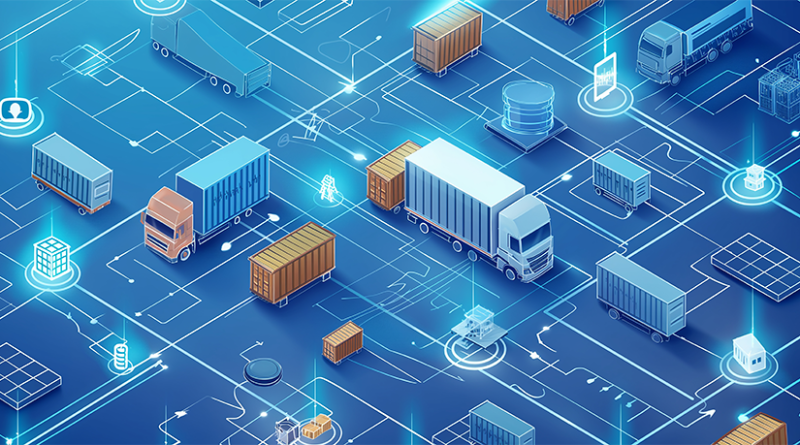How AI-Driven Predictive Analytics is Mitigating Risks in Supply Chains
Supply chains are complex networks with countless variables, often making them prone to disruptions. Artificial intelligence is changing the game by providing companies with real-time visibility into their operations. With AI-driven analytics, organizations can monitor supply chain performance and adapt quickly to unexpected challenges.
AI tools process vast amounts of data from various sources—such as IoT devices, logistics systems, and market trends—offering valuable insights for decision-makers. AI-powered dashboards, for instance, allow supply chain managers to visualize bottlenecks, delays, and risks in real-time. This enhanced visibility reduces downtime and supports agile responses.
One example is the Global Supply Chain Resilience Initiative (GSRI), which leverages AI to improve coordination among supply chain participants. By fostering transparency and communication, GSRI strengthens networks, helping them withstand disruptions more effectively.
AI’s impact on procurement and manufacturing processes
Procurement and manufacturing are undergoing a transformation thanks to AI technologies. AI automates procurement tasks, enabling businesses to streamline supplier selection, evaluate contracts, and forecast material needs with precision.
In manufacturing, AI optimizes production schedules and automates quality checks. These capabilities are reshaping the supplier landscape: businesses that adopt AI gain a competitive edge, while others risk falling behind. Additionally, AI allows companies to access and analyze real-time supply chain data, enhancing decision-making and operational efficiency.
How AI-driven predictive analytics is mitigating risks in supply chains
The global supply chain landscape faces a range of risks, from climate change to geopolitical tensions. AI-driven predictive analytics is helping companies address these challenges by anticipating disruptions and providing actionable insights.
For example, AI models analyze historical data and weather patterns to forecast extreme conditions that may impact supply chains. By predicting these disruptions, businesses can adjust shipping routes or stockpile essential inventory to maintain continuity.
Geopolitical risks, such as trade restrictions or political instability, also pose significant challenges. AI tools assess news, policy changes, and economic indicators to recommend alternative trade routes or sourcing strategies. This proactive approach minimizes disruptions and ensures supply chain resilience.
Real-world examples of AI in supply chains
AI’s transformative power is evident in the success stories of companies already integrating it into their operations.
One example is JD.com, which uses AI for demand forecasting
and inventory management. This integration has optimized their supply chain,
resulting in a 92% increase in net income. With the capacity to analyze
consumer behavior and market trends, JD.com ensures that inventory levels align
closely with demand, reducing waste and improving efficiency.
Unilever has also benefited from AI integration. By leveraging AI to target promotions and enhance vending machine operations, the company has seen sales increase by 15–35% for its retail partners. These innovations highlight how AI can drive profitability while enhancing customer experiences.
Walmart is another leader in AI-driven supply chains. The retail giant uses AI for inventory optimization, enabling it to anticipate customer needs with greater accuracy. This technology has streamlined operations and cut costs, reinforcing Walmart’s position as an industry leader.
Future trends and innovations in AI for supply chains
The integration of AI into supply chain management is set to expand even further, with significant innovations on the horizon.
Autonomous supply chains, for example, are becoming a reality. These systems rely on AI to make real-time decisions with minimal human intervention, creating seamless and efficient logistics networks. Multi-agent systems are a prime example of how AI is enabling autonomous operations across supply chain ecosystems.
Generative AI is also gaining traction. This technology simulates supply chain scenarios to optimize capacity planning, pricing, and resource allocation. Its ability to enhance forecasting and decision-making is reshaping the industry.
AI is also driving improvements in supply chain security. Automated machine learning tools are being used to detect fraud, predict maintenance needs, and forecast material backorders, ensuring more resilient operations.
Sustainability is another area where AI is making strides. Companies are using AI to monitor carbon footprints and optimize shipping routes to reduce emissions. These efforts align supply chain strategies with broader environmental goals, demonstrating AI’s versatility in addressing both operational and sustainability challenges.
Sources:
To keep up-to-date with our latest supply chain news, subscribe to our newsletter today.
